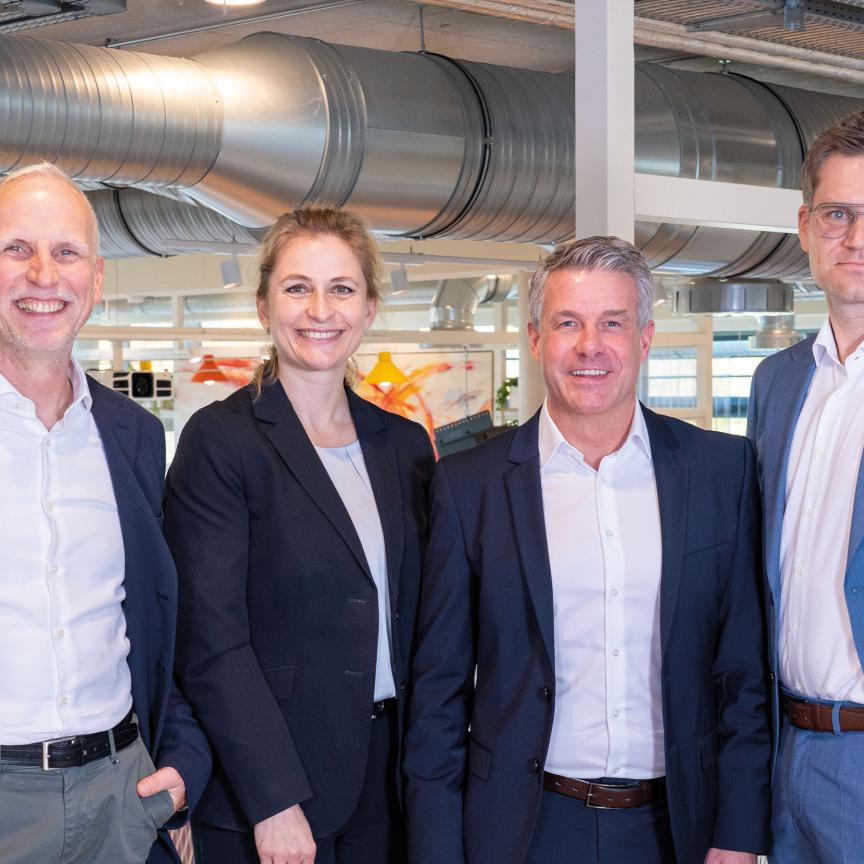There is plenty of merger and acquisition activity in the machine vision market at the moment, a testament to the strength of the vision sector. Since July 2017 there have been at least 11 takeovers: Imaging Solutions Group is now part of Jadak; Jenoptik acquired Otto Vision Technology and Ovitec; Flir bought two companies, an AI firm and a data analytics supplier for the transport sector; Basler purchased Silicon Software; On Semiconductor bought SensL; Balluff Group became a majority shareholder of Matrix Vision; Wilhelm Stemmer sold Stemmer Imaging; HGH Infrared Systems was acquired by an asset management company; Omron bought Microscan; and Rockwell Automation purchased Odos Imaging.
Considering that the majority of industrial vision firms are small and medium-sized enterprises (SMEs), selling to a larger company can be a natural step in the growth of the SME. The SME gets access to resources and markets, while the buyer might gain technology, products, IP, or new vertical or geographical markets. Odos Imaging, for example, sold to Rockwell Automation in November 2017 because Rockwell’s resources as a larger entity meant Odos could continue its growth plans, according to Chris Yates, the then CEO of Odos and now director of advanced technology at Rockwell Automation within the sensing and safety business.
Yates was speaking as part of a panel of industry experts discussing M&A activity at the European Machine Vision Association’s (EMVA) annual business conference, held in Dubrovnik, Croatia from 7 to 9 June.
‘Valuation of vision companies is pretty strong right now,’ commented Gabriele Jansen, managing director of M&A machine vision advisory firm Vision Ventures, who was chairing the panel discussion. She put this down to the strong growth perspective of vision firms in traditional factory automation, but also in higher volume markets like logistics and robotics.
Three quarters of all M&A transactions made in the machine vision sector are 100 per cent acquisitions, according to Jansen, either from within the vision industry, but also increasingly from outside.
To a lesser extent, machine vision companies are acquired by private equity or family offices, or staged acquisitions by industrial buyers, where a small percentage of the firm is bought and then that share is raised to 100 per cent after a couple of years. There is also a buy-and-build strategy to create larger vision entities out of a number of smaller acquisitions, such as Lakesight Technologies, which is owned by the Ambienta private equity fund and formed from Tattile, Mikrotron and Chromasens.
What the buyer wants
Kai-Udo Modrich, managing director of Carl Zeiss Automated Inspection, noted during the EMVA discussion that buying is driven by the strategy of the purchasing company. ‘For machine vision companies to be attractive, beside the technology, you have to have a clear plan and a clear structure,’ he said.
Zeiss has made several acquisitions in the field of machine vision, software and metrology. It bought HGV Vosseler in 2012 to form Carl Zeiss Machine Vision, which was a strategic purchase as HGV Vosseler had a footprint in the automotive industry.
‘You have to know your market,’ Modrich continued. He said that the technology is the most important selling point, but that technology on its own is not enough. As part of researching a potential purchase, Zeiss would look into the company’s management, its financial perspectives, the markets for its products, the expected growth rates, how mature the company is from a global perspective, and whether it has access in the Chinese market or other strong markets.
Michel Ollivier, a member of the board at glass inspection specialist Tiama, said that the human side of the business is also really important. The technology is often best known by only one or two people, so if those people leave as a consequence of the buyout, then the new owner loses a lot of knowledge. It’s also important to consider whether the staff from the two enterprises can be integrated easily and work well together.
Ollivier has experience as both a buyer and a seller. He sold his company to Tiama – and has been involved in selling non-core divisions of Tiama – and has bought companies in Hungary and Sweden, and divisions of companies in Germany and the USA. He listed the motivations for buying as: firstly, to expand the product portfolio; secondly, to accelerate presence in a market; thirdly, to win market share in different geographic zones; and finally, to create higher enterprise value.
Ollivier added the strength of the patents and the firm’s financial situation are considered by the buyer – ‘we never go with companies showing a period of negative profit’, he said. Firms with a small share in a market where there is a dominant player are also not considered favourable.
What the seller wants
The seller first of all needs to identify its reasons for selling. ‘It sounds silly, but knowing why you’re going to try and go through an acquisition process is pretty important, as it defines all the work you will do beyond that,’ Yates commented.
After that it becomes a matter of preparation, Yates advised. He suggested assembling a list of firms that would be suitable acquirers and target them specifically. Also, have all aspects of the business – operational, HR, technology, IP, management – accessible and structured in a presentable way to help the process.
‘These are upbeat transactions; these are not companies in distress – they are being sold for continuation of strategic needs,’ he added.

Martin Wäny, CEO of consultancy firm TechnologiesMW, founded Awaiba in 2004. Awaiba was acquired by Cmosis in 2014, and Cmosis was itself acquired by Ams in 2015. Wäny explained that Awaiba had developed technology for two markets, machine vision and medical imaging, but it did not have the structure to make a success of both. Awaiba therefore looked for partners so that those technologies could reach their full potential.
Wäny commented during the EMVA panel discussion that one of the reasons for selling a company is that it has difficulty in accessing certain markets or geographical regions. It’s therefore important to check that the buyer has a strong sales team in the targeted regions, and an operational organisation that can realise the potential of the seller when volumes ramp up. Also, does the buyer have the right certificates required by the market? ‘It’s important to check, because once you start the process, as an SME, you cannot easily do this in parallel with multiple buyers,’ he remarked.
There’s also the question of whether the owner of the company selling is happy to become an employee in a larger organisation, rather than the boss of the firm they founded. Also, the team, particularly in a small company, can be quite close-knit, and those people have to be able to flourish and expand within the larger company.
If the seller goes down the private equity route, Wäny warned that the money is attractive, but that it comes with a risk: the investor looks for a return on investment in the short term. On the one hand this can help focus efforts, but on the other it can be frustrating if the company has long-term plans.
Good advice
Ollivier said that the value of the company will be estimated by the earnings before interest and tax (EBIT) multiplied by a factor. The factor is influenced by the track record of the company over the past five years, as well as its business plan, which Ollivier said should be realistic.
Due diligence plays a critical role in the valuation of the company, according to Modrich. He said that, as a buyer, Zeiss would inspect the company’s finances and scrutinise: the technology development; the production processes integrated in that development; how HR is managed; how sales are managed; logistics; and whether there are efficiency programmes already established in manufacturing. All this is evaluated in addition to the finances. It’s also important to make a plan for the employees after the merger, especially when it comes to leadership.
Intellectual property is also a strong value generator, but it’s something that can be difficult to value, Yates noted – ‘it takes a lot of effort legally to go through IP’. He said that it’s important to find a way to communicate IP effectively, whether that’s patent IP or knowhow IP, because it can be a powerful selling tool.
Yates recommended hiring an advisory firm to guide the seller through the acquisition process. ‘An advisor would be a buffer between you and a potential acquirer,’ he said. ‘It takes out some level of subjectivity you might have as an owner, particularly if it’s a company you started yourself.’
Ollivier agreed that in most cases the seller needs to be equipped with an M&A advisor. ‘If you have founded a company you are really selling your baby, and you put so much emotion in the process that you are unable to manage it,’ he observed. ‘It’s important to have this M&A advisor to determine the limits for the deal, and to run the process as a project manager.’
He also advised prospective buyers and sellers to involve their management. ‘If you buy without your management then you will have to run the company yourself,’ he warned. ‘If you sell, it’s the same, because if the management decide to leave, you face a problem and the value of the company will drop. It’s also important to convince the management that it’s a good step for the company, either to sell or buy.’
Lawyers will need to be involved, who are a step removed from the business. Yates advised that, from the seller’s side, lawyers ‘definitely need to be directed’. He said: ‘You cannot expect to go through complex share purchase agreements and leave it to the lawyers. You need to go through and understand the implications of the agreement on yourself as sellers.’
Modrich summed up that it’s important to be clear on what kind of acquisition the seller wants: ‘Is it an exit strategy, do you just want to sell and leave the company? Is it something where you want to step back from being a CEO and having financial pressure? Or is it something where you want to grow faster, then who is the right partner? If you can answer this question and be clear on the direction you are going, you should be attractive for your future buyer.’
He added that the seller should ask the buyer what the synergies are between the two companies. In terms of sales, for instance, the seller should ask about the buyer’s sales structure, and how easy it would be to adopt new technologies in that structure. ‘This is crucial, absolutely crucial,’ Modrich stated.
‘If this is not clear and if it’s not done well, then it will take a long time to implement new technologies in these big organisations and have success on the sales side. All the sales people in the organisation have to learn to deal with your technology, and it takes a lot of time to train and build the right organisation on a global scale. Ask for the existing structures and discuss with your buyer how you can bring your existing sales force and your existing experience into the big organisation.’


